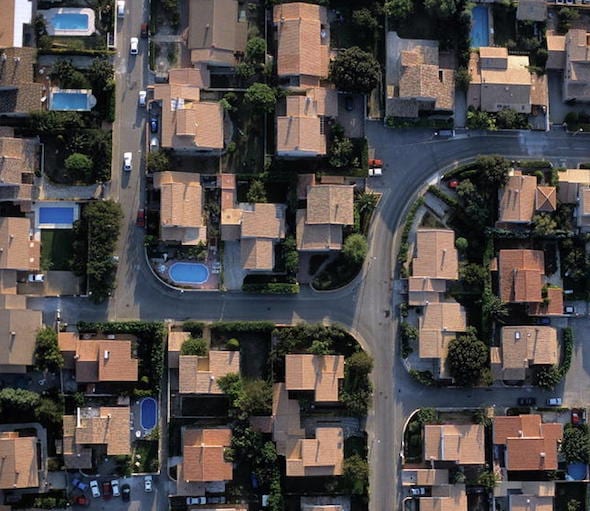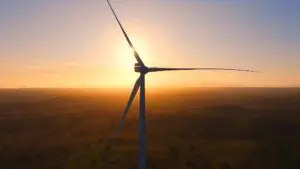Experts say new housing estates may be built that do not connect to the grid, offering instead free electricity, and even free EVs to residents. Meanwhile, numerous towns are looking how to buy back their grid.
Imagine this: Newly built housing estates that are not even connected to the main electricity grid. Solar and battery storage come standard in new homes, included in the purchase price and mortgage, and effectively providing free electricity. The package may even include an electric vehicle in the garage.

Sound like a dream into the future? Maybe, but not very far into the future. According to players in the battery storage and smart technology markets, it is already happening and housing developers in Australia are exploring exactly these sort of options.
“This is technology of now,” says Philip Keogan, the head of Australian operations for US-based storage software company Sunverge, pointing to developments already under way in California. “We are beyond pilots, beyond trials, this is the technical reality today.”
Not only are developers looking to keep new estates off the grid, but dozens of councils around Australia are looking to do the same with existing communities. They are exploring ways of sourcing all their electricity needs from renewable energy and are considering ways they can buy back the grid from the local operators, just as is happening in Europe and in the US.
And remote towns, up to now reliant entirely on imported fossil fuels, are looking to dump that reliance by using battery storage and renewable energy sources such as solar and wind energy.
This dramatic change from the centralized energy model that has dominated for the past century or more is not just the pipe dream of developers and technologists. The network operators themselves – particularly those in regional areas – recognize it as reality. They are just trying to figure out how they fit into this new reality.
Richard Turner, the head of Adelaide-based Zen Energy Systems, says numerous housing developers want their new developments to be fully sustainable and micro-grid based.
This is not just for “green reasons” or a point of difference, although that plays into their thinking. It actually makes economic sense. It costs millions to connect a new housing development to the grid, but renewable based micro-grids can deliver electricity for an effective levellised cost of energy in the low to mid 20c/kWh.
That is significantly below the retail rate currently charged for grid-based power, and will likely fall rapidly, as the cost of storage falls and the cost of renewables continue on their downward trajectory.
Turner says he expects to announce his first projects in coming months. He hinted at this in a recent speech in Adelaide, which we reported on here. The SA government appears to be fully supportive. Regulatory exemptions have been obtained in some instances. Different options are being considered on the local energy model, and who acts as the electricity supplier.
It could be the property developer, or a specialist energy services company, or the local network – after all, houses will still need to be linked to each other and community-based facilities such as renewable generators and storage, even if they are not connected to the main grid.
There are some examples, already, of small steps property developers are taking. In Darwin, Defence Housing Australia is creating a “solar suburb” in a new development near the CBD, with each home to feature a 4.5kW rooftop solar system and charging points for electric vehicles.
In WA, property development groups Lend Lease and LandCorp are installing a major community-level battery storage pilot that could change the way that residential communities source energy, including not being connected to the grid.
The next step, though, will be even more dramatic, and may come sooner than expected.
“Many housing developers nationally are coming to us now to tell us they want their developments to be fully sustainable and micro grid based and offer a long-term low cost of renewable energy,” Turner says.
Each locality will focus on its own advantages, be it in wind, solar, biomass, co-generation, or hydro, or a combination of some or all. “These will become standard for new developments and townships, particularly in regional areas,” Turner says.
Sunverge’s Keogan points to the experience in California, where the city of Sacramento is creating zero net energy communities, and KB Homes, the biggest property developer, is offering zero not energy homes that combine solar PV, with energy storage, energy-efficient appliances, and may even throw in an electric vehicle.
“This demonstrates what is possible in the property development space.”
The opportunities of micro-grids are not just attracting the attention of new developments, but also that of existing towns.
Turner says there are numerous councils now looking at the possibility of buying back the grid, or cutting their links altogether. That is a more complicated transaction than new housing estates, because of the sunk investment from networks, but it is sure to become a reality.
This has been recognised by SA Power Networks, which says it makes sense for remote communities to look after their own needs. Ergon Energy in Queensland has suggested the same. In Western Australia, the local grid operator is looking to create a micro grid for the mining town of Ravensthorpe because the grid connection is too expensive, and often damaged by storms and fire.
And, Turner says, communities that are already off-grid, but are dependent on diesel or gas, are also looking to ditch fossil fuels and use renewables and storage instead. Coober Pedy in South Australia is currently building a project lead-funded by the Australian Renewable Energy Agency, which is looking to integrate 2MW of solar PV, 3MW of wind, and a 2MW, 750kWh battery storage set up. This could account for 70 per cent of the town’s needs.








